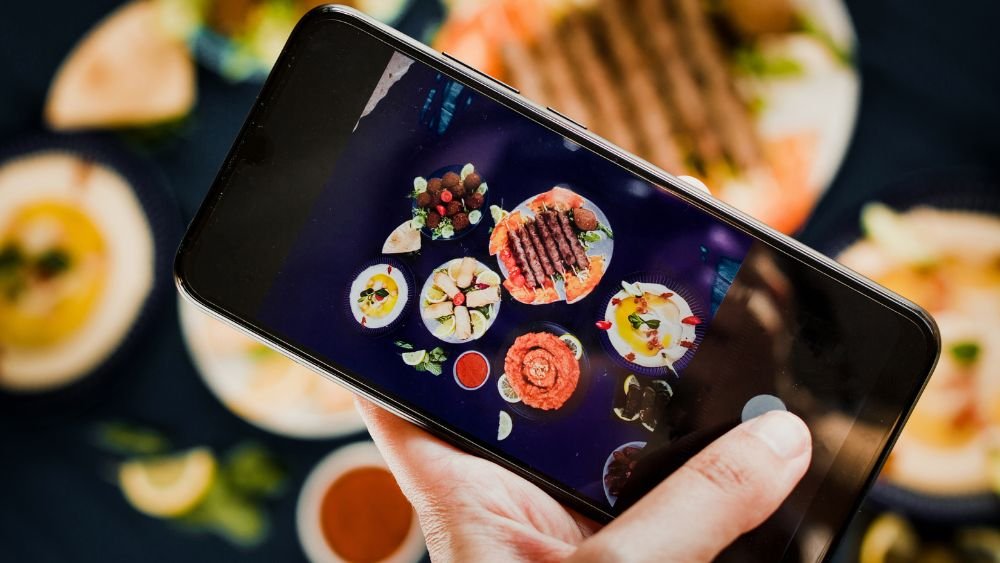Explore a Winning Social Media Strategy for Food Business in 2024. Learn how to connect, engage, and thrive in the digital food industry
Introduction To The Importance Of Social Media For Food Businesses
Are you in the food business and looking for a social media strategy for food business in 2024?
Well, you’re in luck because the secret ingredient to success lies within the realm of social media!
In today’s digital age, having a robust social media presence is no longer just an option, it’s a necessity.
With millions of people scrolling through their feeds daily, there has never been a better time to leverage these platforms to connect with your target audience.
Explore a winning social media strategy for food business in 2024. Learn how to connect, engage, and thrive in the digital food industry!
Identifying The Target Audience And Their Preferred Social Media Platforms
Identifying the target audience is a crucial step in developing an effective social media strategy for your food business.
Understanding who your customers are and what platforms they prefer to use will allow you to tailor your content and engage with them more effectively.
To begin, conduct thorough market research to gather insights about your target audience’s demographics, interests, and online behavior.
Once you have a clear picture of who your ideal customers are, it’s time to determine which social media platforms they frequent.
Different age groups tend to gravitate towards different platforms – for example, younger audiences may be more active on Instagram or TikTok, while older demographics might prefer Facebook or LinkedIn.
Consider the nature of your food business as well – if you offer visually appealing dishes or unique recipes, visual-based platforms like Instagram or Pinterest would be ideal for showcasing your creations.
However, if you provide catering services or focus on B2B sales, professional networking sites like LinkedIn may be more appropriate.
By identifying where your target audience spends their time online, you can allocate resources wisely and concentrate efforts on the most relevant platforms.
Remember that consumer preferences can evolve as new platforms emerge and existing ones gain or lose popularity.
Stay updated with industry trends by regularly monitoring changes in user behavior and adjusting your social media strategy accordingly.
Creating A Strong Brand Presence On Social Media Through Engaging Content And Visuals
Creating a strong brand presence on social media is essential for food businesses in 2024.
With the increasing competition and evolving consumer preferences, it’s crucial to stand out from the crowd and engage with your target audience effectively.
One of the key ways to do this is by creating engaging content that captures the attention of your followers.
The goal is to provide value and entertainment while staying true to your brand identity.
Visuals play a vital role in capturing people’s attention on social media platforms. High-quality images and well-designed graphics can make all the difference between someone scrolling past your post and stopping to take notice.
Invest in professional photography or consider partnering with influencers who have an eye for aesthetics.
Another important aspect of building a strong brand presence is consistency. Posting regularly and maintaining a cohesive visual style helps reinforce your brand identity in consumers’ minds.
It also builds trust as people come to recognize and associate certain elements with your business.
Beyond just posting content, it’s crucial to engage with your audience through active comments, direct messages, and community management strategies.
Respond promptly to inquiries or feedback, show appreciation for customer reviews or shout-outs, and foster meaningful conversations within online communities related to food.
Remember that social media algorithms are constantly changing; therefore keeping up-to-date with best practices will help ensure maximum reach for your posts.
Stay informed about new features offered by different platforms such as Instagram Reels or Facebook Live, which can help you connect with customers innovatively.
Creating a strong brand presence on social media requires compelling content that resonates with your audience along with visually appealing visuals that capture their attention.
Consistency in posting frequency and branding elements further strengthens this presence while active engagement fosters stronger connections between you and potential customers.
Leveraging Social Media Advertising To Reach A Wider Audience
Leveraging social media advertising is an essential aspect of any effective social media strategy for food businesses.
With the ever-increasing number of users on platforms like Facebook, Instagram, and Twitter, it’s crucial to reach a wider audience beyond just your organic followers.
One way to do this is by using paid ads on these platforms. These ads allow you to target specific demographics, interests, and behaviors relevant to your ideal customers.
By reaching out to a larger audience who may not have come across your business otherwise, you can increase brand awareness and potentially attract new customers.
Including customer testimonials or reviews can also add credibility and entice potential customers to give your food a try.
To maximize the effectiveness of your social media ads, consider utilizing retargeting campaigns.
Remember that monitoring the performance of your social media ad campaigns is crucial for optimizing their impact.
Pay attention to metrics such as click-through rates, conversions, and engagement levels.
Leveraging social media advertising offers tremendous potential for expanding the reach of food businesses online.
By targeting specific audiences through well-crafted ads and continually analyzing performance metrics, you can ensure maximum visibility while attracting new customers eager to sample what’s cooking in your kitchen!
Tracking And Analyzing Social Media Metrics To Improve Strategy
In the fast-paced world of social media, it is crucial for food businesses to stay on top of their game by constantly monitoring and analyzing their performance.
By tracking and analyzing social media metrics, companies can gain valuable insights into the effectiveness of their strategies and make informed decisions to improve their reach and engagement.
One key metric to monitor is audience growth.
Tracking the number of followers or subscribers on different platforms can help determine which channels are performing well and where there may be potential for growth.
Engagement rate is another important metric to measure. It reflects how well a brand’s content resonates with its audience.
By examining likes, comments, shares, and clicks on posts, companies can gauge the level of interest generated by their content.
Monitoring reach is essential for assessing how many people are exposed to a company’s message or content.
Keeping track of impressions (the number of times a post appears in users’ feeds) helps determine if efforts are reaching a wider audience or if adjustments need to be made.
Furthermore, click-through rate (CTR) provides insight into how effective calls-to-action (CTAs) are at driving traffic from social media platforms back to a business website or online store.
Analyzing CTR allows food businesses to assess the impact of different CTAs, such as “Shop now” buttons or links included in posts.
Conclusion
In 2024, social media is not just an option for food businesses; it’s a necessity. With countless users scrolling through their feeds daily, it’s the perfect time to connect with your audience.
By identifying your target audience and their preferred platforms, creating engaging content, leveraging social media advertising, and tracking metrics, you can leave a lasting impression on hungry hearts and minds.
So, dive into the world of social media and watch your food business thrive!









